[
Reposting this for those who want some information on the course while watching this weekend's Swinging Skirts LPGA Classic, live on Golf Channel from 6-9 pm ET both tonight and tomorrow.]
Last summer, on my way to Australia, I stopped on the West Coast to see friends and play some golf. While in San Francisco, I was fortunate to play both Harding Park and Lake Merced in the same day. I was underwhelmed by the former--which appears, minus the views, to be the Torrey Pines South of Northern California, maligned by golf-course-architecture junkies but adored by governing golf bodies responsible for hosting large professional events--and overwhelmed by the latter--which I had been dying to play ever since I fell in love with Lydia Ko while watching the LPGA event held at the club last April (and again this April 23-26 in primetime, 6-9 p.m. EST, on Golf Channel). (The course also serves as the backdrop for the Game Golf commercials that run on Golf Channel from time to time.) Ironically, Harding Park runs alongside the actual Lake Merced, which can be seen from several holes at the PGATour darling, whereas Lake Merced the golf club does not.
I know there has been much debate about whether photo tours are better with fewer photos. This time, I have no choice: I played Lake Merced with brand-new friends who had kindly arranged the round, so I spent most of my time being grateful and getting to know them. My pictures are accordingly few, and, in another departure from my usual practice, I've chosen to arrange them not sequentially by hole, but thematically by design or topographical feature. I hope they nonetheless convey the feel of the course, which, despite its difficulty, oozes with charm.
Lake Merced Golf ClubDaly City, CAAn afternoon round at Lake Merced, captured here by the downhill approach at the short par-4 16th, is a glorious affair:
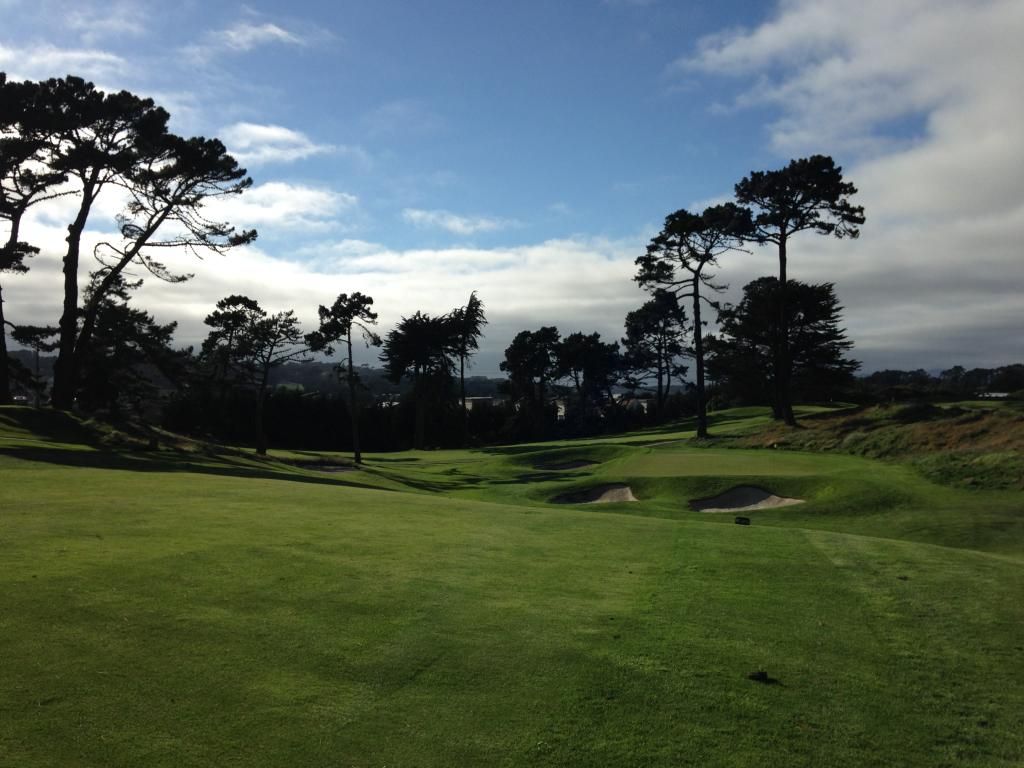
When I composed my Harbour Town review/photo tour, I kept asking myself what other courses I would consider tighter/narrower than Harbour Town--which, as I noted there, is much wider than I had been led to believe. Lake Merced, a refreshingly sub-7000-yard affair from the tips, would be at the top of the list of those I have played. Whereas the land at Harbour Town is flat, it is very hilly at Lake Merced--as it is at Olympic, which I have seen only on TV, but which I understand is similarly, if not more, tight. The topography results in canted fairways that reduce the effective width of a given hole significantly. Even without the cants in the fairways, the actual width of the playing corridors, accounting for the number of low, overhanging trees, is, at least in my memory, much, much narrower than at Harbour Town. Lake Merced's first two holes, tight, twisting par-4s, make abundantly clear to any level golfer that trees will be hit at some point off the tee. Thankfully, the architects--Robert Muir Graves, with recent renovations by Rees Jones--chose not to design many doglegs and certainly none that are sharp; they would be borderline unfair given the severity of the topography. (The Good Doctor, Alistair Mackenzie, redesigned the course in the 1920s, but a highway, which now runs adjacent to the par-5 9th hole and the club's entrance, apparently forced the club to scrap most of his design.)
Lake Merced's tightness and undulations are readily apparent in this view back up the 16th fairway from one of the front greenside bunkers:
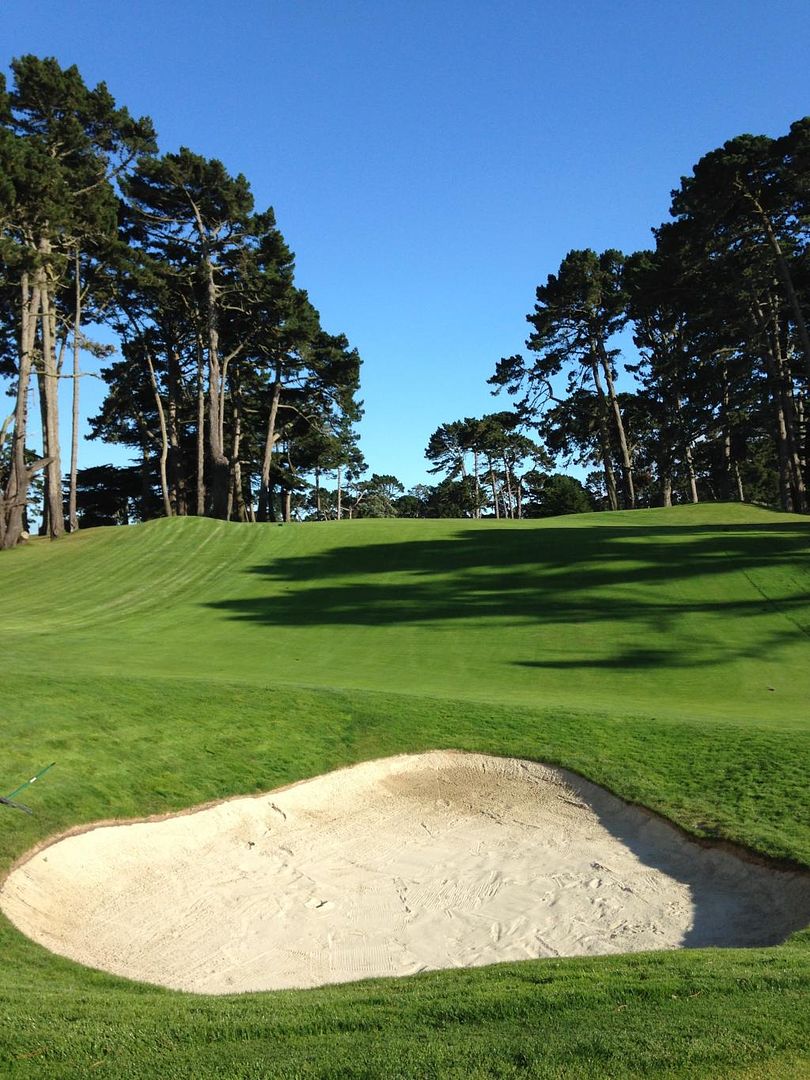
The par-5 9th, which returns to the clubhouse, has a left-to-right gently canting fairway emblematic of many at Lake Merced, in that its slope reduces its actual width; the ball in view landed in the rough left of the fairway before feeding back to the short grass:
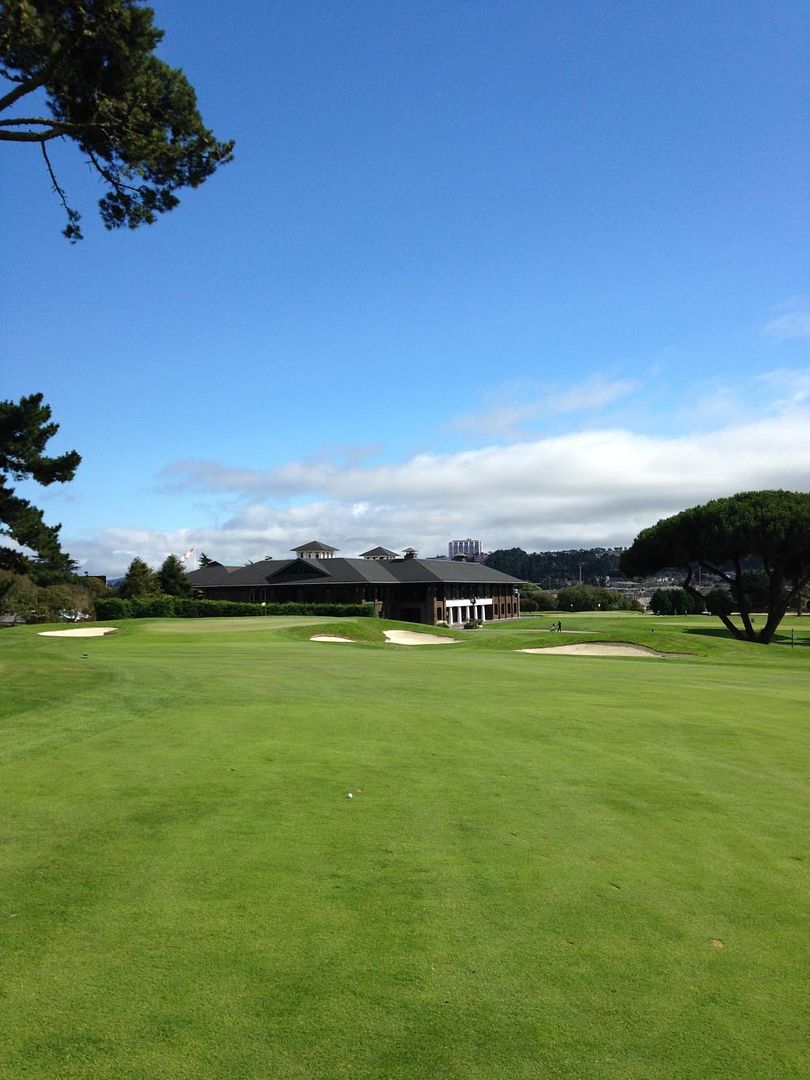
The massive elevation changes that define Lake Merced--made all the more impressive in relation to the relatively confined, even cramped plot of land on which the course sits--result in wonderfully framed green sites either perched atop a steep slope or sunken at the bottom of one. By contrast, the green surfaces themselves are relatively flat--they have slopes, mostly back to front, but minimal contours--which allows the club to keep them very hard and very fast, yet playable.
The sunken green site at the short par-4 16th is arguably the course's best, replete even with a nice set of fronting bunkers (which, though deep, are in general the course's most bland design feature--certainly a far cry from their Mackenzian predecessors and the artistry on display at nearby San Francisco Golf Club):
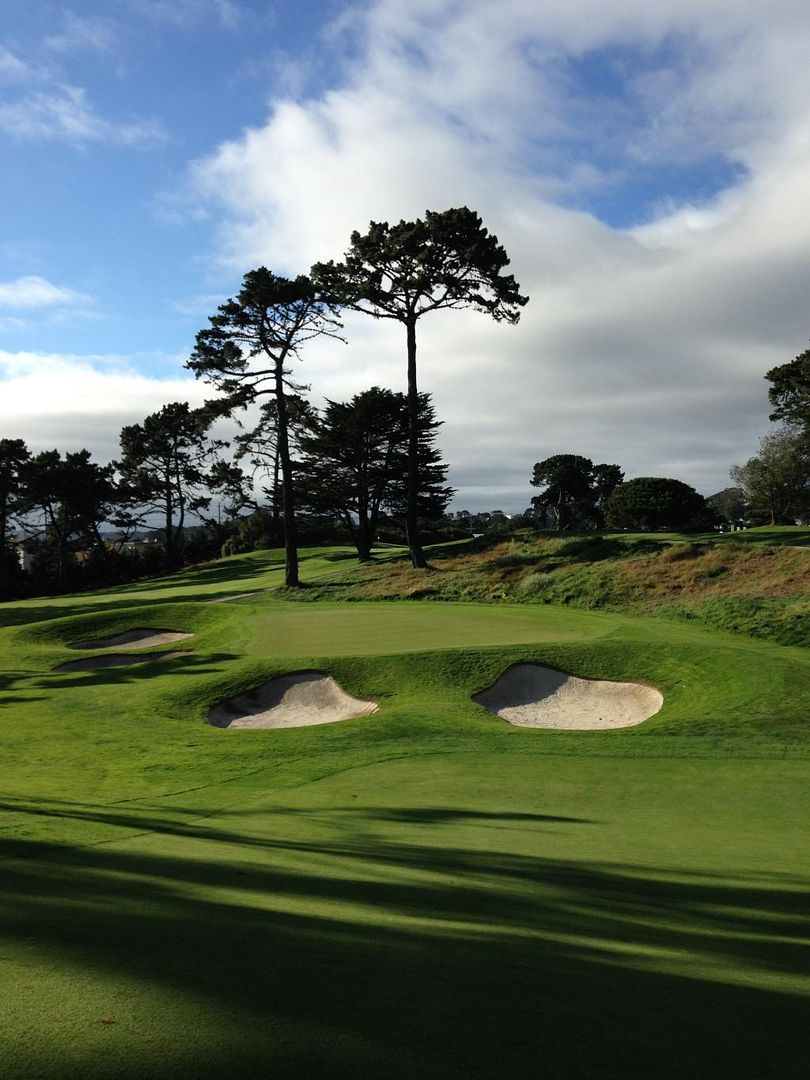
The view from behind the 16th green shows off the elevation changes and natural movements in the land that define Lake Merced:
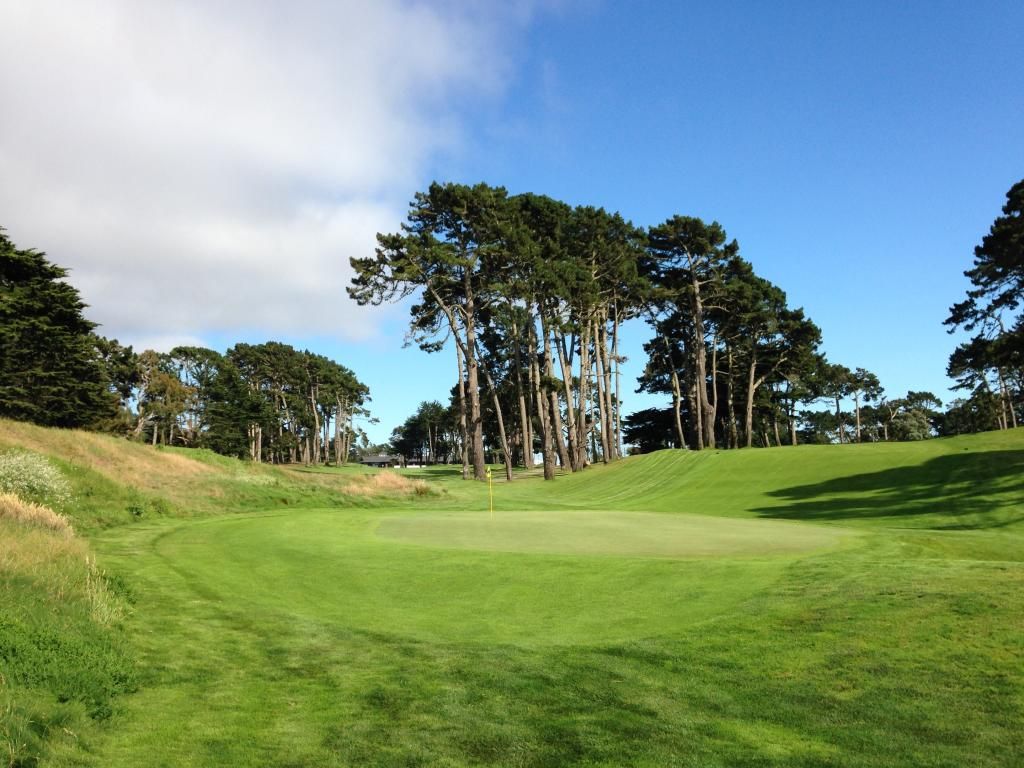
One of the many perched green sites is found at the home hole, a par-5 where gauging the distance on a wedge third is complicated by the steep uphill slope leading from fairway to green (the new clubhouse in the background--though blessed with an excellent locker room, pro shop, and, I hear, food--is a bit too big and austere for the setting and the course, which give off a distinctly intimate vibe):
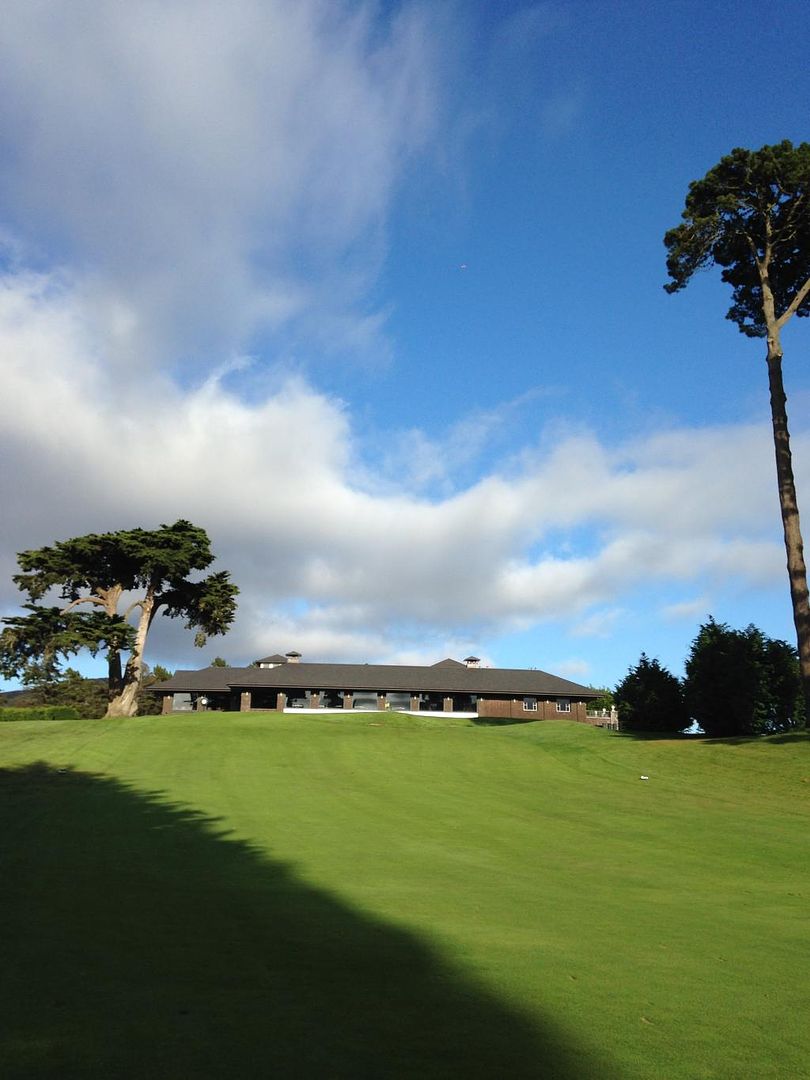
Although the majority of the holes at Lake Merced feel tight off the tee, the principal aberration is actually the course's hardest hole (at least by handicap), the relatively wide-open, uphill par-4 4th, replete with different trees that confirm its out-of-character nature. A (very) poor man's version of the 10th at Yale (incidentally, it also follows a dramatically downhill par-3, albeit a short one without a Biarritz green), the 4th's tee shot plunges to a sunken fairway and the approach rises to a deep-bunker-fronted perched green, as at the above-pictured 18th, although within a much more open playing corridor at the 4th:

The same shot sequence at the 4th--a downhill tee shot followed by a steeply uphill approach--repeats not only at the 18th, but also at the par-4 13th, in both instances within tighter playing corridors:
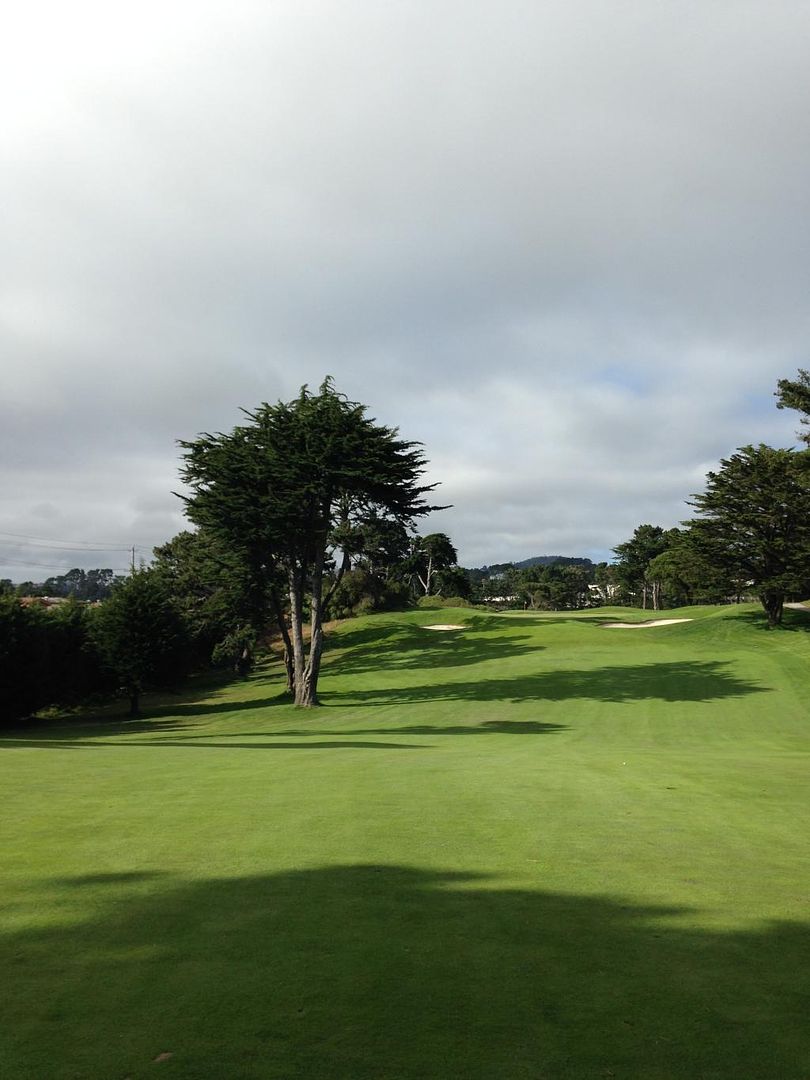
What Harding Park lacks in definition (partly because of the much flatter land on which it sits, but also because of the design), Lake Merced supplies in spades. The brown fescue, though rarely coming into play, offers a nice contrast to the green of the course and of the trees. It's not only beautiful to look at, but helpful for gauging depth and distance--critical variables with so much elevation change. These qualities are evident both in the earlier picture of the green site at the par-4 16th and in this view back up the steep slope toward the tee on the short, downhill par-3 3rd hole:
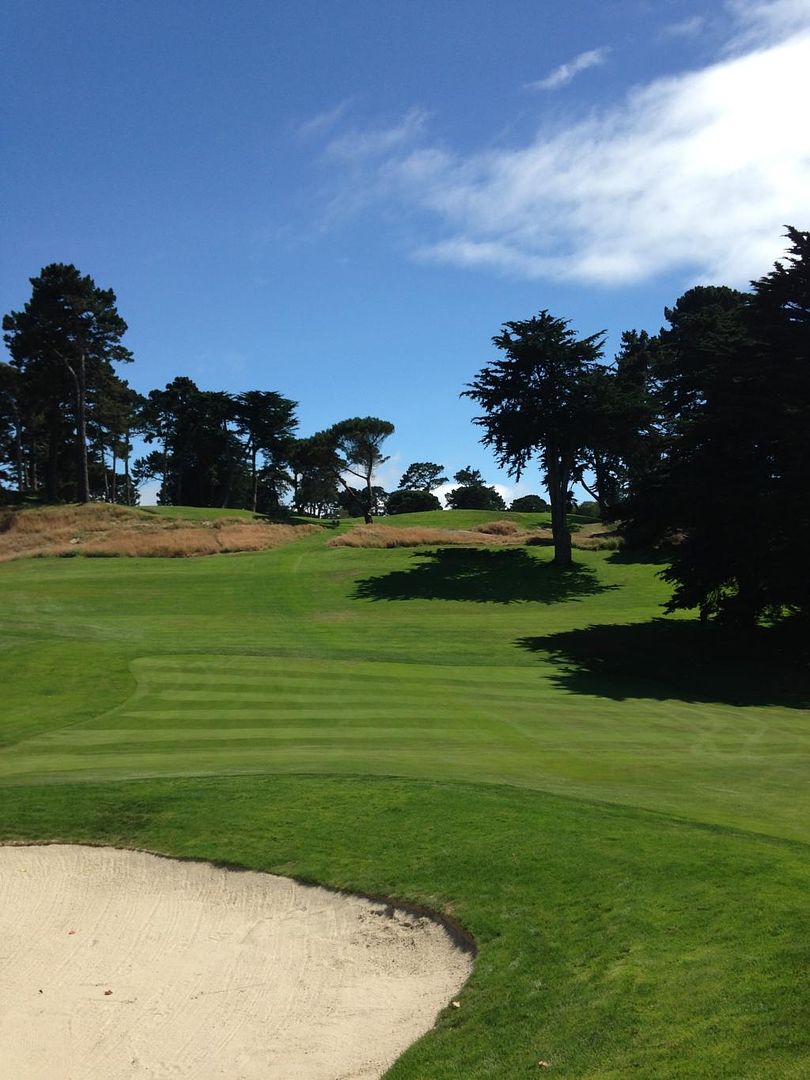
Although the trees at Harding Park and Lake Merced are the same, their grouping and placement is superior at Lake Merced, as seen here in the stand of trees guarding the right side of the downhill sloping 17th fairway (with the green in the distance on the left; on the right is the 12th tee):
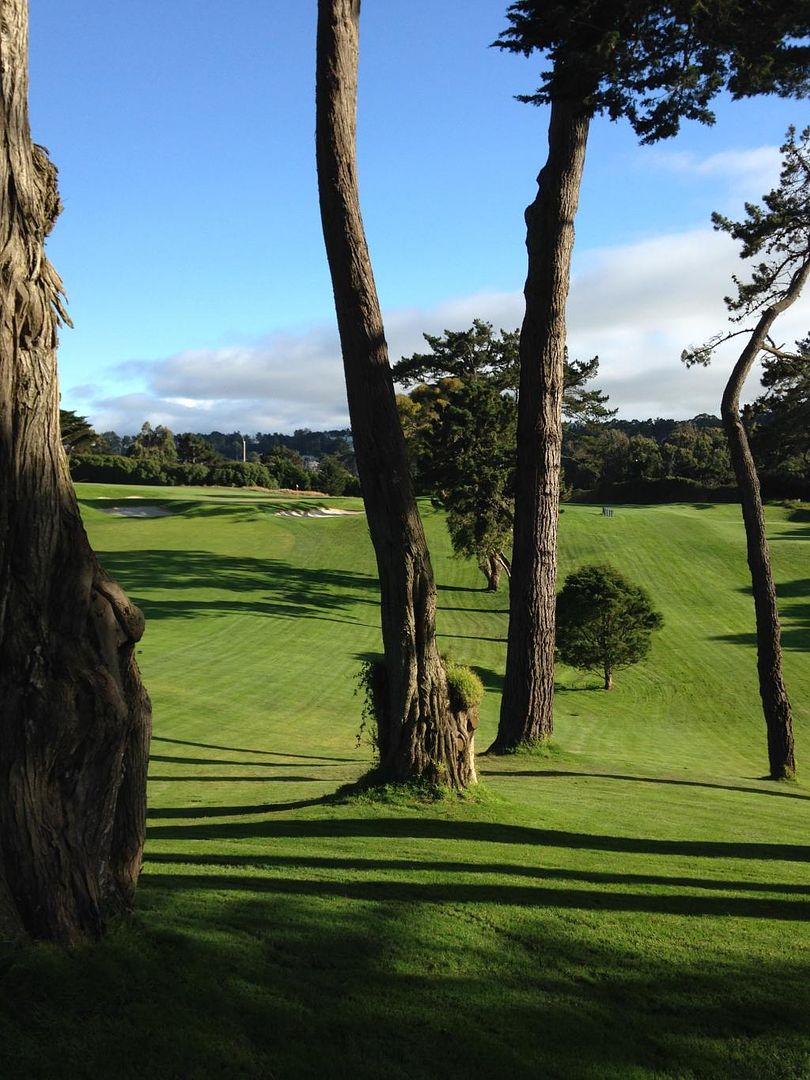
The cypress trees even accentuate the land; here, like flower stalks bending toward the sun during photosynthesis, tree branches seemingly grow in parallel with the climbing slope up to the perched par-3 12th green:
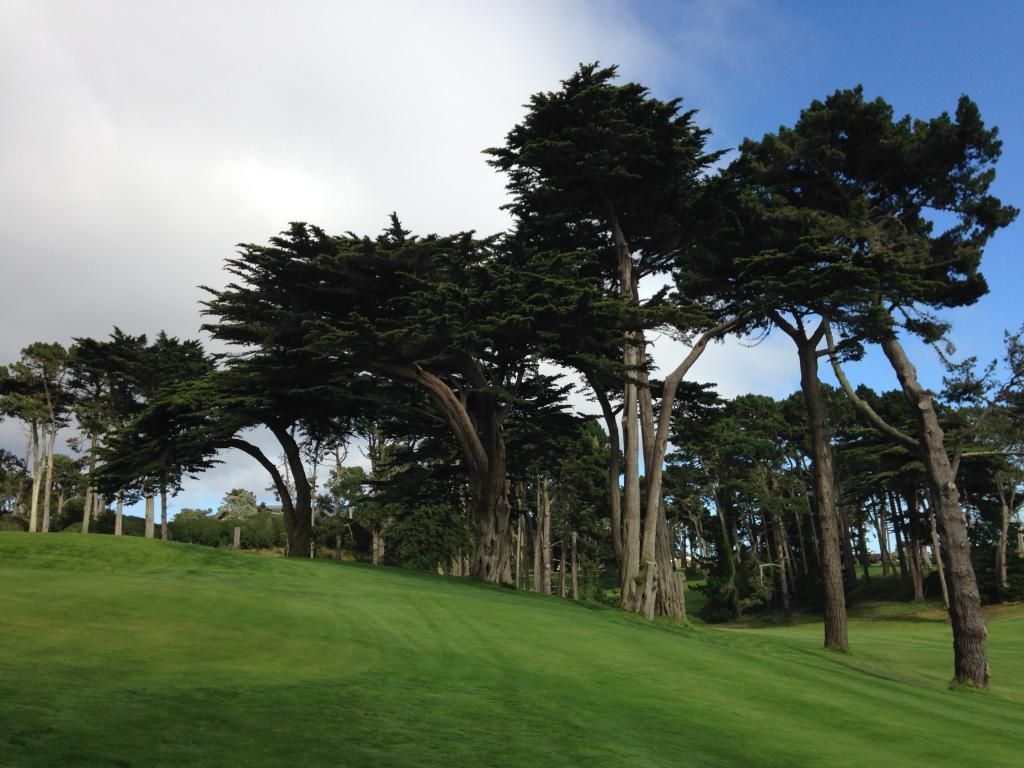
Avoid the trees on the right too much and you're likely to find the long sunken bunker on the left of the green, which is one of the more undulating on the course (note both the false front at the otherwise flat front half of the green and the ridge at the back half of the green, creating two distinct, upper-right and lower-left, levels):
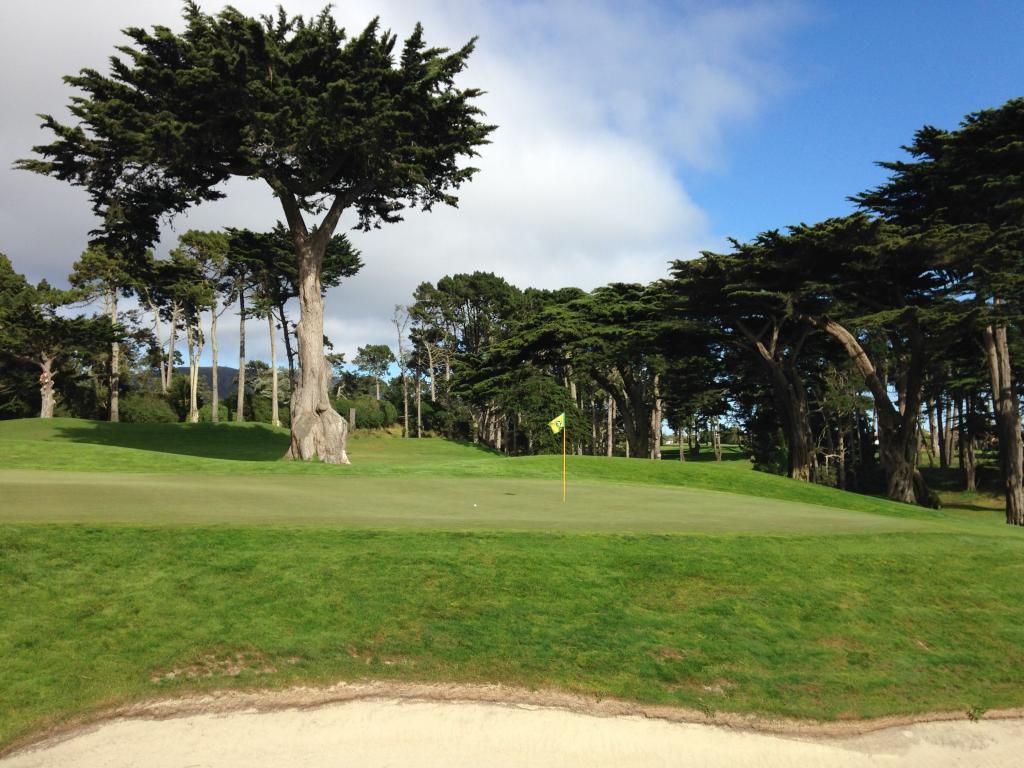
The rich and long championship history at Lake Merced (see the "about us" tab on the club's website for details) makes good sense. Blessed with a unique blend of sharply undulating topography and firm, relatively flat greens, the course provides a stern test without being overly penal and, indeed, while still being quite enjoyable--and even fun. Whether I buy paraphernalia after my round is a good indication of how fond my feelings are not only for the course, but the overall experience of a club. At Lake Merced, I bought both a shirt from the sale rack and a new pom-pom head cover for my driver. San Francisco is blessed with so many world-class courses in such a small area--San Francisco Golf Club, California Golf Club, and Olympic being the cream--that Lake Merced often gets overlooked, both by those in the know and certainly by those in the mainstream. (For a comprehensive review and comparison of those courses, including Lake Merced, see Matt Cohn's excellent piece in this site's "In My Opinion" section:
http://golfclubatlas.com/in-my-opinion/the-golf-courses-around-lake-merced-by-matt-cohn/.) Thankfully, the LPGA's Swinging Skirts event has brought the club, which has a pleasing two-color logo, back into the public consciousness, where it so richly deserves to be.
